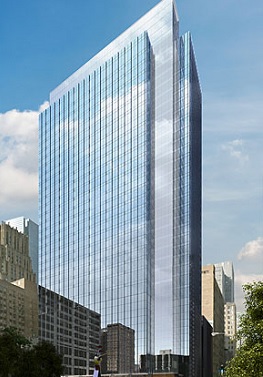The Return of the "See Through"
In terms of the office segment, and the credit and securitization apparatus behind it, and the inflated “valuations” all this is based on: There is no way back to the old normal.

Capital Thinking • Issue #576 • View online
That any return to the old normal for landlords, banks, and holders of CMBS is just a dream is now being increasingly accepted, including by Larry Fink, CEO of mega asset-manager BlackRock:
“I don’t think any company’s going to go back to 100% of the workforce in the office,” he said at an online event. “That means less congestion in cities. It means, more importantly, less need for commercial real estate.”
This new era of office real estate comes on top of the problems currently erupting: Tenants moving out for nicer digs, now that there are plenty available, or tenants laying off people and possibly shutting down.
How the Unicorn Blowup & Oil Bust Bleed into Commercial Mortgage-Backed Securities
The office segment of the commercial real estate market – and the debt and the commercial mortgage-backed securities (CMBS) that are backed by it – are going through serious gyrations on a combination of factors.
Companies have figured out how to make work-from-home manageable. Other companies are moving out, leaving buildings vacant, or are deferring rent payments.
Landlords whose cashflow from rents has suddenly crashed are failing to make their mortgage payments or are asking for forbearance.
And CMBS are at the receiving end of the process.
That any return to the old normal for landlords, banks, and holders of CMBS is just a dream is now being increasingly accepted, including by Larry Fink, CEO of mega asset-manager BlackRock:
“I don’t think any company’s going to go back to 100% of the workforce in the office,” he said at an online event. “That means less congestion in cities. It means, more importantly, less need for commercial real estate.”
This new era of office real estate comes on top of the problems currently erupting: Tenants moving out for nicer digs, now that there are plenty available, or tenants laying off people and possibly shutting down. So here are two specific examples of how this is bleeding into CMBS.
In Houston, the office vacancy rate has been above 20% for years due to the oil-bust that started in late 2014. It was 22% in Q1, according to JLL’s Q1 2020 report.
The construction boom that was still in full swing in 2015 has put a lot of brand-new Class A office towers on the market with little demand, as oil companies have shed office space.
Developers have been trying to fill those new towers, and in doing so, companies have moved from their prior digs into superb new spaces – the “flight to quality.” JLL:
After the true scale of the COVID-19 crisis emerged, Houston market observers are thinking, “here we go again.” Already beset by five years of skyrocketing vacancy, Houston’s office market may be headed for a double-dip thanks to an ailing energy market and a worsening Coronavirus situation.
JLL called it the market’s “split personality”: “heavy demand” for new buildings “counter-balanced by generationally-high vacancy, weak tenant demand, and a palpable sense of unease from energy sector volatility.”
And JLL added that on top of the “already weak quarter” in terms of signed leases, “the first quarter was further exacerbated by a near halting of leasing activity in the last few weeks of March.”
This is the environment in which the debt behind One City Centre at 1021 Main St. in downtown Houston is blowing up.
This 602,000-square-foot office tower backs $100 million of CMBS debt. The collateral was appraised for $162 million at the time the debt was packaged into CMBS in 2015.
And now, it turns out, according to Commercial Real Estate Direct, citing estimates by DBRS Morningstar, the tower might be worth only $35.7 million.
The interest-only $100-million mortgage, which matures in April 2025, is split into two pieces that have been included in two CMBS, according to a note sent out by Trepp, which analyses CMBS: a $60 million piece that makes up 7.9% in JPMBB 2015-C29; and a $40 million piece that makes up 3.4% of JPMBB 2015-C30, which is a part of CMBX 9.
The 32-floor tower, which was completed in 1960 and was renovated in 2010, had an occupancy rate of 68% in 2019.
Its largest remaining tenant, Waste Management, which occupies 40% of the space, decided to not renew the lease that ends in December 2020.
Instead, it will move into the brand-new Capitol Tower a few blocks away.

In terms of the office segment, and the credit and securitization apparatus behind it, and the inflated “valuations” all this is based on: There is no way back to the old normal.
A shakeout has now commenced, and when the shakeout is over – this could be a slow-moving process – there will be a new era with an oversupply of office space and chronically low demand.
*Featured post photo by Jose Losada on Unsplash